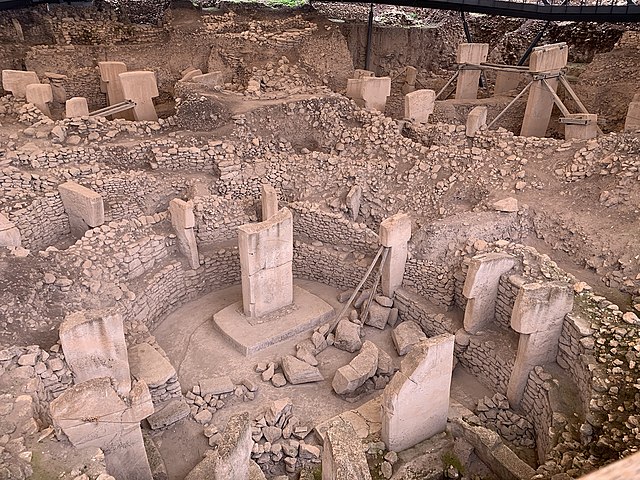
What is the oldest stone circle in the world? Probably the stone circles at Göbekli Tepe, which are almost 12,000 years old.
A stone circle is literally a ring made of standing stones. There were many earth circles and wooden stake circles made as well, but they haven’t lasted as well as the stone circles. LIDAR can show where earth circles were constructed. A lot of stone circles were dismantled so that their stone could be used for other building projects. The same happened with the surface stones of the Great Pyramids as well. There are close to 2,000 stone circles left in the world. Some countries have far more stone circles than others and this is largely down to the religion that those people had. Most stone circles served a religious purpose and they were usually connected to the winter and summer solstices in some way.
The oldest stone circles have been found in Göbekli Tepe, which is in Turkey. 20 stone circles have been discovered in the area and they have been dated to between 10000 BC and 8000 BC. 7,000 years older than the pyramids and Stonehenge. It is the oldest human-made place of worship ever found and it possibly shows how religions started.
The constructions at Göbekli Tepe are found on top of a hill that gives it a clear view over the surrounding countryside. The name Göbekli Tepe means “potbelly hill” in Turkish. On top of the hill, there are several stone circles that consist of large T-shaped limestone rocks, up to 3 meters high. Many of the rocks have animals carved into them. There are lions, ducks, scorpions, ants, spiders, bulls, foxes, cranes, and snakes, amongst others. The megaliths form a circle, surrounded by a stone wall with an entrance, making this the first stone circle and probably the first “temple” as well. The rocks come from the cliffs at the edge of the hill and unfinished megaliths have been found there. The people who made these complexes did it with stone tools. The area is almost a desert now, but 10,000 years ago it was much more lush, and all of these animals were probably in abundance.
This building is special in that it is the first stone circle, but also because it represents so many other firsts. In 10,000 BC, humans were living in small tribes and they were basic hunter-gatherers. Around about the time that Göbekli Tepe was built, people were starting to turn to agriculture. This wasn’t a sudden thing. It took thousands of years and happened in many different places, but it had started. The reason that this is important is that it would be impossible for a hunter-gatherer society to build anything like this. Hunter-gatherers have to spend nearly all of their time looking for food. Building a building such as Göbekli Tepe takes a long time and would require a steady supply of food.
The second first that this building proves is that of levels of society. Most hunter-gatherer tribes tended to be equal. There might be a tribe leader, and they might be ordered by strength, but they did not have an ordered society. A building such as Göbekli Tepe would need builders and it would need the people to order it. There is also evidence that it was built with slave labor. The people who ordered it must have had a higher position than the people that built it and to own slaves implies a societal hierarchy.
Göbekli Tepe was probably intended for religious ceremonies. This can be shown by the animal bones that have been found, which were probably the result of sacrifices. And, if the people who ordered the building and ran the ceremonies were a type of “priest”, that would be the first type of priestly caste as well.
For some reason, Göbekli Tepe was used for about 2,000 years, and then it was buried. Many cities that fell out of use were abandoned. The Aztec cities are a good example. However, unlike those cities, Göbekli Tepe was intentionally buried. It is thanks to that it still exists. The rocks weren’t stolen and the weather couldn’t get to it. 500 cubic meters of soil were piled on top of it. Nobody knows why.
Göbekli Tepe is the first stone circle, but it was built for worship. Most of the stone circles that we know were somehow aligned with the sun at different times of the year or the stars. They were astronomical sites. The oldest astronomical stone circle was the Nabta Playa in Egypt, about 800 km south of Cairo. It was built in 7500 BC, which is very old, but still 3000 years younger than Göbekli Tepe. And this is what I learned today.
Sources
https://en.wikipedia.org/wiki/G%C3%B6bekli_Tepe
https://archive.archaeology.org/0811/abstracts/turkey.html
https://www.crystalinks.com/gobekli_tepe.html
https://ecohustler.com/culture/10-things-you-didnt-know-about-stone-circles

